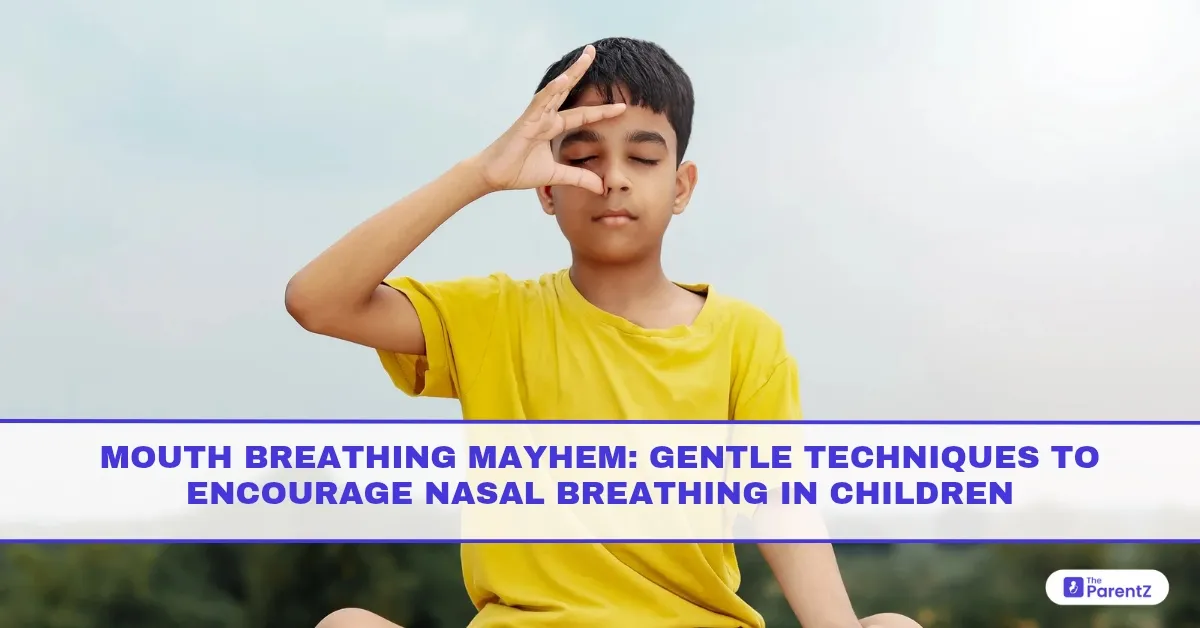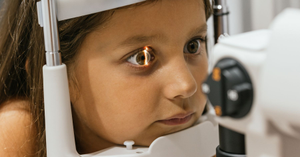Breathing might seem like something we do without thinking, but how a child breathes, especially during sleep, can have a lasting impact on their oral health, growth, and development.
Mouth breathing in children is more than just a habit. If left unaddressed, it can lead to crooked teeth, speech delays, facial structure changes, and even behavioral issues. The good news? With early awareness and gentle, consistent techniques, most children can be guided back to nasal breathing.
Why Does Mouth Breathing Happen?
Children may breathe through their mouth for various reasons:
- Nasal congestion from allergies, colds, enlarged adenoids, or sinus infections
- Habitual breathing formed during infancy or after prolonged illnesses
- Structural issues like a deviated septum or enlarged tonsils
- Poor tongue posture or oral habits like thumb sucking
Mouth breathing can often begin unnoticed, especially if it only happens at night or during sleep.
Why Nasal Breathing Matters
Nasal breathing isn’t just the body’s default setting; it’s also the healthier way to breathe. Here’s why:
- Nasal air is filtered, humidified, and warmed before reaching the lungs
- Nose breathing encourages proper tongue posture, which helps guide jaw development
- Breathing through the mouth can dry out oral tissues, increasing the risk of cavities and gum inflammation
- It disrupts normal facial growth, often leading to longer faces, smaller jaws, or misaligned teeth
- It may interfere with sleep, leading to restlessness, snoring, or symptoms similar to ADHD
Supporting your child in switching back to nasal breathing can help prevent these issues and support better oral and general health.
How to Tell if Your Child is a Mouth Breather
Look for these signs:
- Sleeping with an open mouth
- Snoring or noisy breathing at night
- Dry lips or mouth in the morning
- Crowded teeth or narrow jaws
- Long face or dark circles under the eyes
- Daytime fatigue or difficulty concentrating
If your child shows several of these signs, consult a pediatrician or pediatric dentist who can help with further evaluation.
Gentle Techniques to Encourage Nasal Breathing
Below are simple, non-invasive strategies parents can use to encourage better breathing habits.
1. Treat the Root Cause (Congestion, Allergies, or Blockage)
Before retraining breathing patterns, ensure your child can physically breathe through their nose.
- Use saline nasal sprays or a neti pot (under guidance) to clear mild nasal congestion
- Use a humidifier during sleep to ease dry nasal passages
- If allergies are the cause, reduce exposure to dust, pollen, or pet dander, and speak to your pediatrician about antihistamines or allergy testing
- For persistent issues like enlarged adenoids or chronic nasal blockage, consult an ENT specialist
2. Tongue and Lip Exercises
Strengthening oral muscles helps improve the resting posture of the tongue (on the palate) and lips (together and sealed).
- Button pull exercise: Thread a clean button onto a string. Have your child place it between their lips and try to hold it while you gently tug the string.
- Lip seal practice: Ask your child to hold a small piece of paper or straw between closed lips (not teeth) for a few seconds.
- Tongue pops: Encourage clicking the tongue against the roof of the mouth as a playful exercise.
Practice these daily for 5–10 minutes as a fun routine.
3. Nose Breathing Awareness Games
Turning nasal breathing into a game makes it easier for children to develop the habit.
- Mirror game: Hold a mirror under the nose and ask your child to fog it up using only their nose, not mouth
- Feather blow: Have your child lie down and breathe through their nose while keeping a feather gently hovering above the lips
- Breathing buddy: Let your child lie on their back with a stuffed toy on their belly and watch it move gently with deep belly breaths through the nose
These exercises build mindfulness around how they breathe.
4. Myofunctional Therapy
Myofunctional therapy is a series of targeted exercises to retrain tongue posture, lip seal, and nasal breathing. It can be done with trained professionals (often pediatric dentists or speech therapists).
For moderate to severe cases especially if a child has crowded teeth, open mouth posture, or a history of thumb sucking myofunctional therapy is very effective.
Ask your pediatric dentist if your child could benefit from this support.
5. Encourage Healthy Sleep Posture
Sleeping on the back can make mouth breathing worse. Encourage side sleeping or propped-up positions if the child is congested.
Remove excess pillows or stuffed toys that might tilt the neck forward or block natural airways.
Establish a calming bedtime routine to improve sleep quality. Poor sleep often worsens mouth breathing patterns.
6. Use Mouth Tape (Only Under Supervision, Older Children Only)
Some parents explore mouth taping during sleep in children aged 6 or older, but this must only be done after confirming that the child can breathe comfortably through the nose and with a dentist’s or doctor’s guidance.
Use special medical mouth strips designed for this purpose, not regular tape, and never use this for toddlers or children who snore heavily or have been diagnosed with sleep apnea.
This method is controversial and not suitable for all children.
7. Reduce Pacifier and Thumb Sucking Habits
Prolonged thumb sucking and pacifier use can keep the mouth open and prevent normal development of jaw muscles and tongue position.
Start weaning after 1 year, and seek help if the habit continues beyond age 3. Positive reinforcement, distraction techniques, and replacement with cuddly comfort objects may help.
When to Seek Professional Help
Sometimes, despite your best efforts, mouth breathing persists. Seek medical or dental evaluation if:
- Your child snores loudly or stops breathing during sleep
- There’s visible crowding or changes in facial structure
- Frequent dry mouth, drooling, or bad breath occurs
- Speech issues or learning difficulties develop
- You notice persistent fatigue or poor concentration
Early intervention by a pediatric dentist, ENT, or orthodontist can prevent long-term effects.
Conclusion
Mouth breathing in children isn’t just a minor habit—it’s a signal that something in their airway or breathing pattern needs attention. Supporting your child with gentle techniques like nasal clearing, breathing games, and tongue exercises can make a significant difference.
With time, encouragement, and when needed, the help of pediatric health professionals, most children can relearn healthy nasal breathing and grow up with better sleep, speech, facial development, and overall health.








Be the first one to comment on this story.